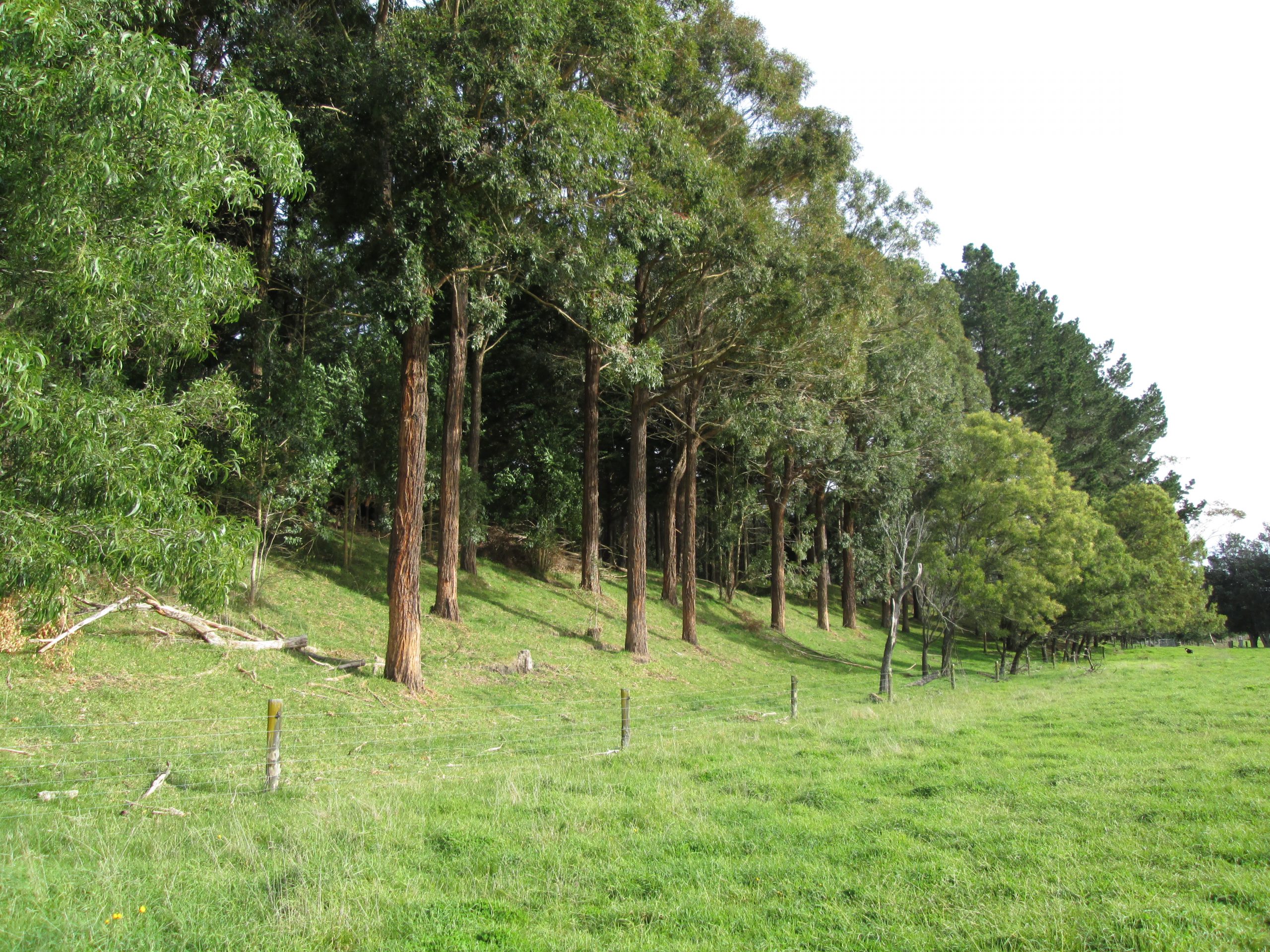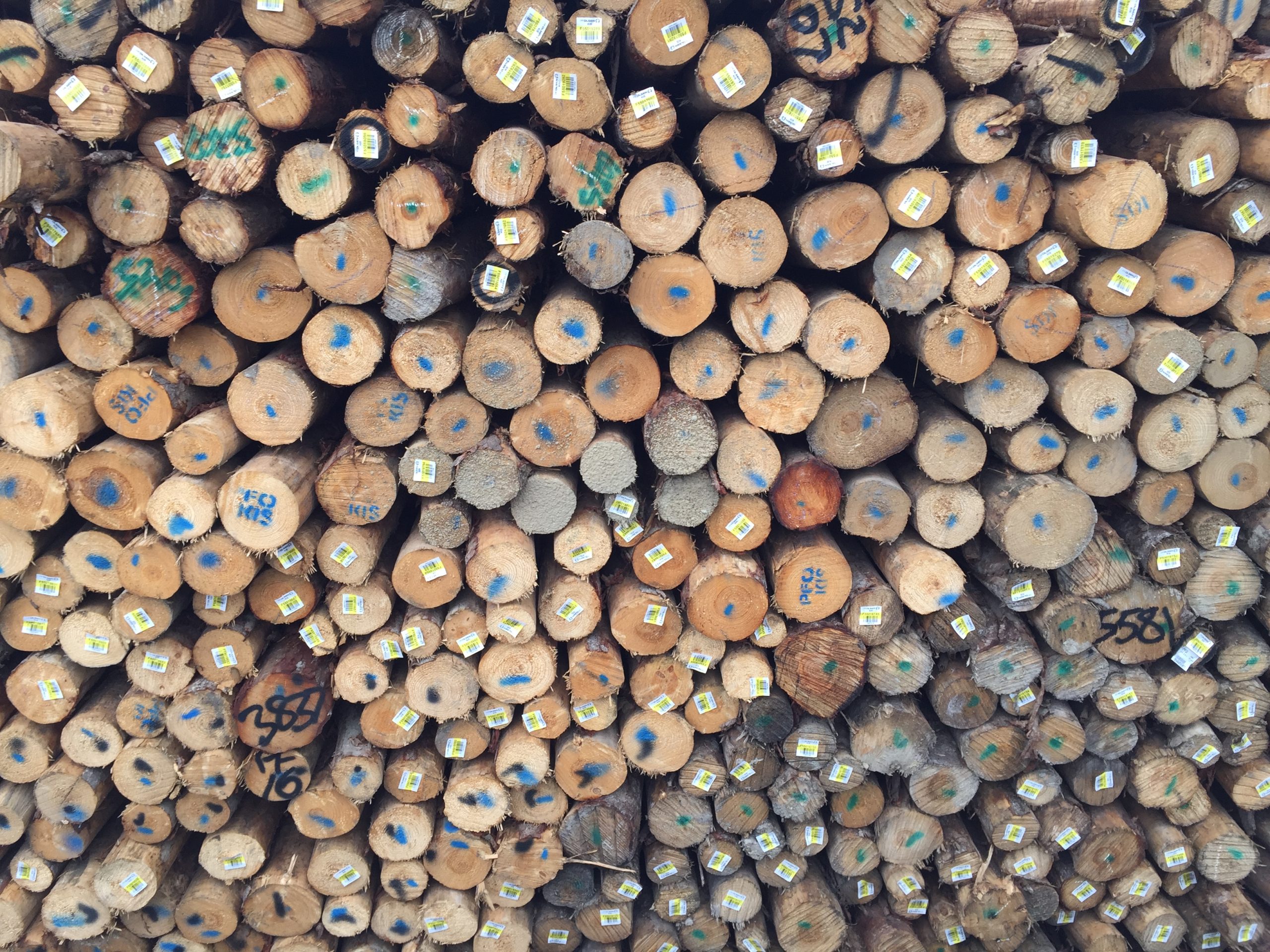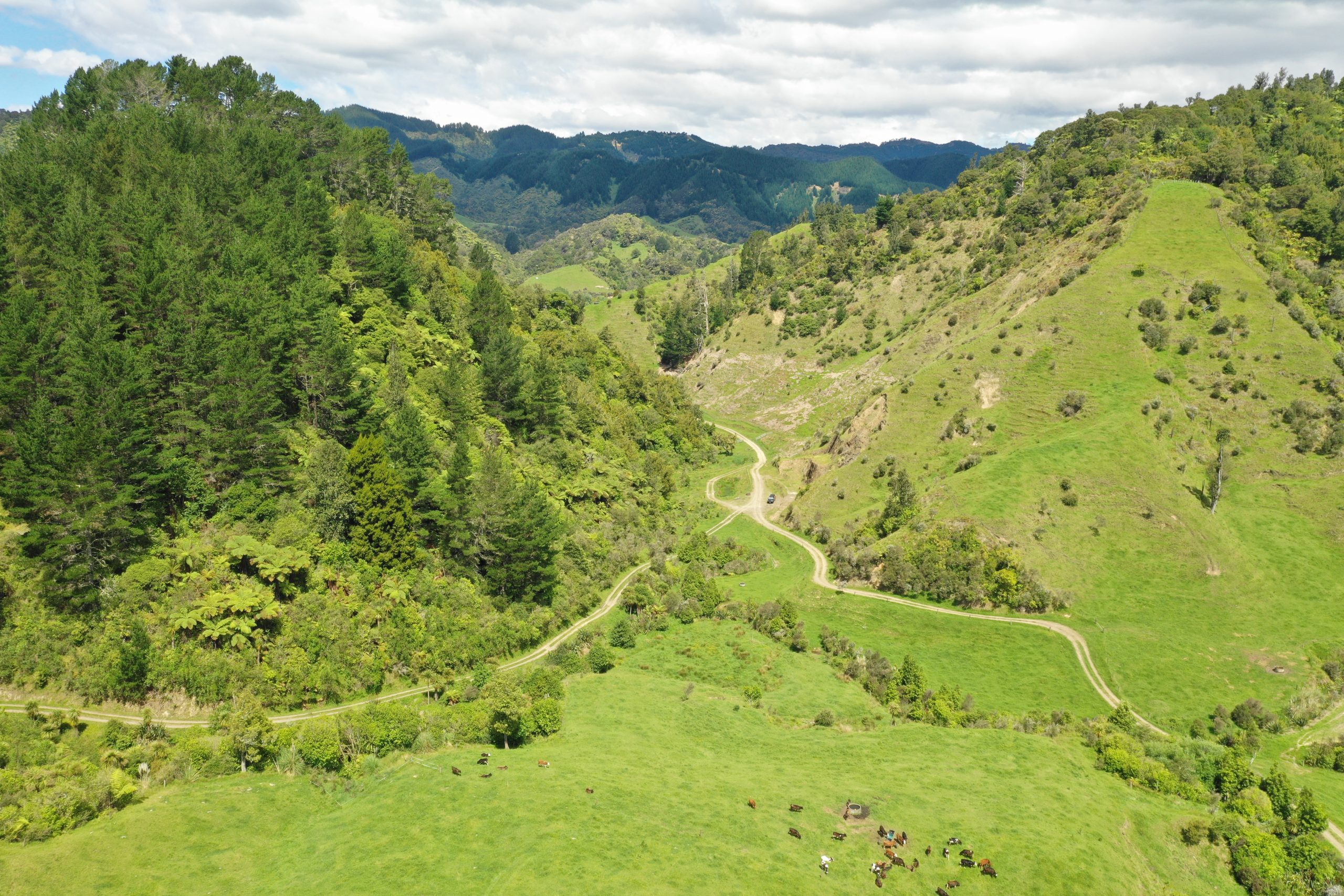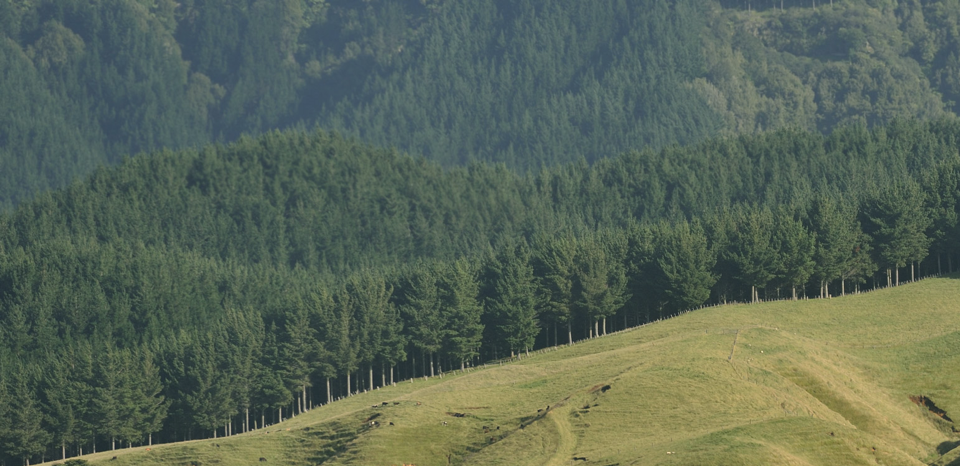On some sites and for some purposes, exotic species have a valuable contribution to make. These species include pines, eucalypts, cypresses, acacias and others. In many cases exotics can complement indigenous species; for some purposes they can achieve what is wanted more effectively. After over 40 years of practical experience, the author argues for an inclusive, internationalist approach to forestry in Aotearoa.
The glib phrase ‘the right tree in the right place’ may suggest an element of wisdom, but to me it suggests the need for some moderately deep investigation and thinking. What are you trying to achieve with any tree planting? What timescale are you considering? Realistically, what options can be considered for the site?
I certainly sense that today you are considered morally and culturally superior if you are planting indigenous species in preference to exotics. And while I accept the special status of our indigenous species, and even more our indigenous ecosystems, they may not be the best answer to some of the above questions. It is worth noting that our indigenous forests have several characteristics that make re-establishment rather difficult and certainly expensive. In addition, we are re-establishing into a climate and environment that is changing quite rapidly.
The forests of Aotearoa are vastly different to those of many temperate zones without the natural fire cycles characterising many continental forests. We have few quick, early colonisers with mānuka and kānuka being the most notable, but they hardly compare with exotics like gorse and acacias. Most native forest species here germinate under a forest canopy and do so slowly, in limited light. They did not evolve to handle the fast and furious race for light that characterises many of the eucalypts and pines after a fire. When catastrophic clearance occurred in Aotearoa’s natural forests it really was catastrophic – major, but infrequent, volcanic events. The arrival of humans and especially the Pākehā were the only comparable events. Our eco-systems are rather delicate, having evolved in comparatively stable conditions in the absence of mammals.
In my own case, at the drier, inland end of the Manawatu/Rangitikei coastal sand country, it is very difficult to establish indigenous species on the dry, infertile dune slopes and especially on the northern faces. On the cooler, moister, southern slopes some species such as māhoe and Muehlenbeckia (pōhuehue) will thrive and tōtara and kōwhai will survive, but mānuka and kānuka are notably absent. Meanwhile, on the wet flats, much coveted for farming, there was originally a complex swamp forest. Yet the dune environment, so hostile to our indigenous tree and shrub species, is nirvana for numerous exotic tree species. Many pines, eucalypts, acacias, and proteaceae thrive on such harsh, dry, infertile sites.

So the question for me is:
Do the general benefits of trees justify an embrace of exotics and a neglect of indigenous species or vice versa?
I see several reasons for planting trees:
- To produce wood:
For many people this may be a minor consideration, though firewood may be a more common thought. However wood production is a simple and straightforward concept, and most people seem to agree that wood is a very desirable resource – renewable, low energy, carbon sequestering and definitely preferable to plastics or energy intensive steel and concrete. There may be disquiet with our over-dependence on radiata pine, its forest management systems and the structure of the radiata pine industry, but most seem to agree that we want and need wood. On the other hand we don’t want to harvest any of our remaining, rather fragile indigenous forests, nor put added pressure on the remaining tropical rainforests. While some indigenous species may have plantation possibilities, including kauri and tōtara, they are relatively slow growing and don’t offer significant wood on the decadal time scale. Exotic species, including pines, cypresses, eucalypts and others, certainly do and for this reason alone I see justification for embracing exotic species.

- For ecological reasons:
There is no doubt that indigenous trees and shrubs have advantages here. Our flora and fauna have evolved with these species and are adapted to them. But it is worth noting that some of our iconic bird species seem remarkably enthusiastic about certain exotic species. Tuis and bellbirds may have evolved with kōwhai, flax, etc. but they flock to my shelterbelts of the exotic Banksia integrifolia for the six months of winter/spring flowers when there is little else around. Similarly kererū come for another exotic, tagasaste (tree lucerne), in the winter/spring period. In Kaingaroa Forest, kārearea, (NZ falcon) thrive in the cut-over areas. And it is also noticeable that plantation forestry does have a much greater diversity of bird life than open farmland. I feel there is room for strategic use of exotics in helping our native species.
- For soil conservation
This is another contentious area with, it seems, a growing belief amongst the public that forestry winds up accelerating erosion. What is certain is that closed canopy forest or scrub land does dramatically reduce soil and sediment loss from erodible land compared to pasture, typically by around 90%. However, harvesting can leave an area exposed to accelerated erosion and potentially slash and debris flows, especially if a serious storm hits the site in the vulnerable period after harvest. However we are not kept similarly informed about the continuing loss of soils from hill country pastoral farming. Comparing the losses from pasture and forest through a whole rotation is difficult, but perhaps the most thorough comparison, the Pakuratahi study just north of Napier, showed substantially less sediment loss through a full forestry rotation than under pastoral farming.
Either way, it seems clear that harvest management needs to improve; also that there is hill country that is too fragile for any commercial use – pastoral or forestry. This latter category probably needs to be retired into relatively stable forest or scrub cover and while many will say this obviously has to be indigenous, in a changing climate this may be debatable. Establishing natives in this sort of country has been described as ‘eye wateringly expensive’ by one participant in a subsidised programme. In addition, the data suggests [1] that as well as being cheaper to establish, exotics generally grow a much bigger root system faster than mānuka and kānuka. The most impressive exotic in one reference is an alder species. Perhaps the answer is to stabilize quickly with fast establishing exotics and let the indigenous species establish underneath, as they have evolved to do. Regardless, I would argue that exotics have a very important role to play in this area, but in conjunction with indigenous species.
- For carbon sequestration
Probably the most contentious reason but one that I see fitting in with the above issues. If the primary motivation for planting trees is off-setting greenhouse gas emissions, then production forestry, harvesting the wood, is considered more effective than permanent forest sinks according to the IPCC’s 4th Assessment. Perhaps the Emissions Trading scheme and other policies should better recognise this. On the other hand if you are using forest cover to stabilise very fragile land, not suited to commercial use, then it is probably appropriate to recognise its carbon sequestration role, but perhaps the Parliamentary Commissioner for the Environment has the answer in suggesting it should be limited to off-setting shorter lifetime gases, mainly methane.
- For shelter and shade
Again, the issue seems to be short-term versus long-term considerations. Poplars, willows, pines, eucalypts, casuarinas etc. win the speed stakes, especially for taller shelter belts, but they may not be peoples’ long-term choice. Perhaps you use the exotics to provide early shelter to aid in the establishment of indigenous species. I would argue that you are better with this wider range of options than resolutely sticking to one or the other.
- For amenity and interest
Planting trees for amenity is an interesting one. You only have to look at the way trees of all types tend to congregate in the wealthier suburbs to realise that people do really enjoy living amongst and adjacent to trees and we see regular articles on the benefits of trees in the urban environment. Some people seem to want indigenous species regardless, others seem to prefer the greater flamboyance of many of the exotics, especially Australian species. I can accept them all. However do make sure the site suits the species especially as regards moisture and fertility and, speaking from personal experience, work out how long before a fast-growing exotic will have outgrown the space and need removing.
- For other roles such as bee and animal fodder
Again, I come down as an internationalist. I have nothing to say about mānuka here, but on my sand dunes I have a variety of eucalypts that will provide year-round nectar and acacias can provide a very useful supply of pollen in the early spring. While you may favour a particular indigenous honey, be it mānuka, rewa-rewa, rātā or whatever, the exotics provide the easiest solution to a 12-month nectar demand. Regarding animal fodder, trials are now underway at Massey University’s Tuapaka property looking at the potential of native shrubs for sheep and cattle browsing. This may well be of interest to many farmers, or it may prove to be a way of training our livestock to be even more destructive; time will tell. Traditionally of course, willow and poplar have been widely and successfully used as drought fodder, while a number of other deciduous, hence exotic, hardwoods such as elm are also very palatable.
So in all these areas I see different exotic tree species providing useful support systems for our lifestyle and land-uses. I see them adding to what we can achieve with the indigenous species, not competing with them. At the same time caution and care are required with some species already established as weeds and others showing the potential to join them. Interestingly, when we look back into our fossil record we find that several genera of trees now found largely in Australia were present in Aotearoa up to the start of the Pleistocene ice ages, two million years ago. In addition, several species in both our flora and fauna seemed to have ‘jumped the ditch’ relatively recently including mānuka and spinifex sand grass. Mother Nature does indulge in quite a bit of mixing, though humans do it much faster, over longer distances and with more destructive outcomes in many, but by no means all, cases.
In summary I would argue that there are many roles requiring trees where exotic species can provide faster, cheaper and more effective solutions than natives and there should not be any unjustified bias against their use. Obvious examples would include wood production, shelter, and quick stabilisation of highly erodible land. No, they should not be taking over all roles but we can achieve much more if we are prepared to use exotic species where they have real advantages.
Ecological integrity
DOC advocates that care should be taken to ensure that any new native restoration projects also take ecological integrity and appropriateness into account. Ensuring what is planted is in keeping with the natural environment. e.g. tall stature forests do not displace estuarine salt marsh ribbonwood or areas of grey scrub /tussock lands and remove the native flora and fauna for well-intended but ecologically inappropriate activities.
Understanding the current condition of the ngāhere will help inform the next steps. New projects will have higher value if they are building on an existing native forest footprint or adjacent to an area of high biodiversity value (lowland wetlands), providing linkages, corridors and buffers to enhance what remains.
Exploring all options before planting is essential. Browse control and or reversion maybe the most cost effective and ecologically appropriate method to realise a significant restoration project.
It takes time to scope and design projects and bring multiple partners together on a strategic vision. Project design should be informed by a restoration plan and costs should be reflective of pressures and values at place.
In many cases, planting is the easy part. Ensuring there is adequate maintenance, browse control and robust monitoring to show the benefit of change to the ecology of the area are important to demonstrate the financial and ecological value of investment, is the hardest and most enduring part of restoration enhancement.
Eco-sourcing
Protecting the ecological integrity of our forests (existing or new) is just as important as protecting them from threats like wilding conifers. We need to ensure what we are planting is the right plant.
Eco-sourcing is sourcing the seed from within the ecological areas from where you intend to replant. By growing from seed sourced within the ecological area, plants flower and seed in sequence with others, plants are adapted climatically to their areas, the genetic integrity of the area is not diluted by plants from outside the area or by cultivated varieties of native plants. Eco-sourcing offers the best chance for survival for a plant, the best return of investment when buying plants for restoration projects and the best choice for local ecological values.

Native forest occurs in many forms on agroecosystems from remnant patches of the original forest to small copse and even scattered trees across paddocks, as well as often large areas of regenerating shrublands and forests, and increasingly areas of restoration plantings. Forest composition is variable depending on where you are in New Zealand, but regenerating forests are often different to remnant forests with species like kahikatea, tōtara, māhoe, kōhūhū, kānuka and mānuka abundant. Native trees in farmland can be found in a wide range of locations but are often most common along gullies or on south facing hill slopes, sites that have provided refuge from historic fires or are less productive from a farming perspective. But in many cases, even on some of our most productive farmland such as in the Waikato, individual trees and even forest remnants can be found scattered across paddocks.
Native trees can offer just the same benefits to farming as exotic trees, and some have comparable growth rates. Native trees on farmland can be important for timber, help reduce the impacts of soil erosion and improve water quality, and provide shade and shelter. But even more than this, native trees provide habitat for native biodiversity, improve landscape connectivity for forest birds, sequester carbon for the very long-term, and are a core part of our cultural and landscape identity. Native trees like kānuka and tōtara can be prolific regenerators even under grazing. In higher rainfall areas like Northland and East Cape, tōtara regenerates vigorously across low producing pastures and there are extensive areas of young regenerating tōtara forests in these landscapes.
It was heartening to see in the January 2021 Climate Change Commission report a strong emphasis on establishing native forests for the long-term carbon sequestration over the use of short-lived pine plantations. But even more importantly, native forests (remnant, regenerating and planted) when considered and planned at a landscape scale can greatly improve connectivity within agroecosystems. This connectivity is essential to allow our native birds including kiwi to spread out across our rural landscapes.
Native trees offer so much in rural landscapes but there are challenges in both retaining what remains and in increasing the number and area of native trees. It is important that we not only retain what we already have but that we manage remaining native trees and forest to sustain and enhance their values. This involves controlling the many factors that threaten them such as invasive plants and animals and through providing buffering and increasing connectivity around and between remnants.
Establishing new native forest is about ecological restoration and involves understanding the ecological processes such as succession and mutualisms, and ensuring that appropriate species are established for the site conditions and that initiate successional development towards more mature forest. In some situations, enrichment of existing forest, especially regenerating forest such as kānuka, might also be an option.
But to both sustain and enhance native forest across rural landscapes the political settings need to be correct. At present we have a National Policy Statement on Indigenous Biodiversity that takes a very rules-based approach to protecting native biodiversity including forest across New Zealand. While we need consistent national rules, a strict rules-based system is likely to fail unless good incentive systems are in place that encourage and support farmers on whose land this current and potential native forest exists.
Simply saying an area of native forest is significant and cannot be developed does nothing to either protect its values or encourage a farmer to think about planting additional areas. Native forest requires management whether it is on public conservation land or private land which is why the Department of Conservation spends hundreds of millions of dollars each year managing biodiversity on public conservation land. New Zealand urgently requires support for landowners to do the same on private land if we are to sustain the values that occur in native forests there. One simple tool that could be used to help with this is allowing farmers to gain some form of carbon-credit from native forest that was present before 1990 (and hence is not Emissions Trading Scheme eligible). This would be a positive incentive for farmers to manage degrading factors like plant and animal pests and would lead to an improvement in habitat quality and of course result in more carbon sequestration. While controversial in some ways, the One Billion Trees programme did contribute to an increase in native forest planting across New Zealand and this scheme needs to be urgently refunded to facilitate ongoing native forest establishment. Finally, landowners need to be provided with really good advice about the importance of their native forests, on how best to manage what remains, and the best ways to establish new native forests. We need biodiversity ambassadors throughout rural New Zealand to provide free, independent, expert advice to landowners.
Native trees are central to who we are as New Zealanders and to what makes New Zealand unique. Native trees can provide many benefits in agroecosystems and the challenge now is to start incentivising landowners and others to both look after the native trees and forests that remain and to establish new native forests. Native trees should be the most conspicuous component of forests and trees in modern New Zealand agroecosystems.




Leave a comment